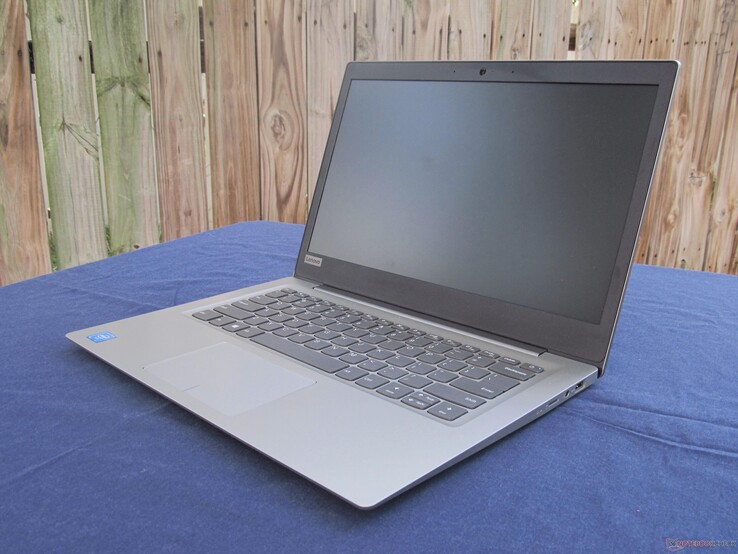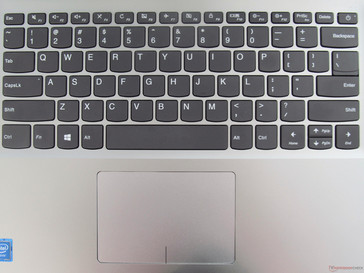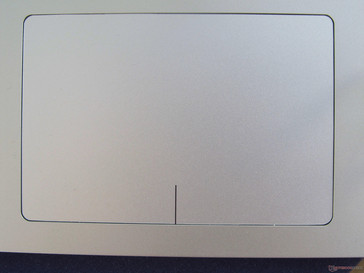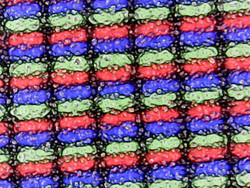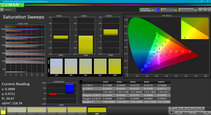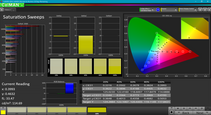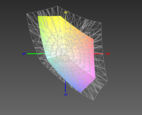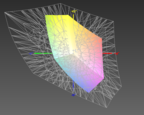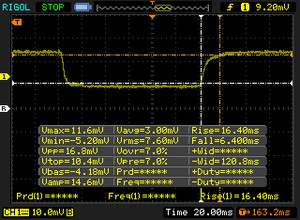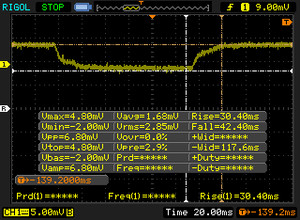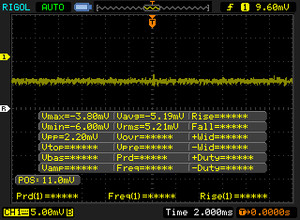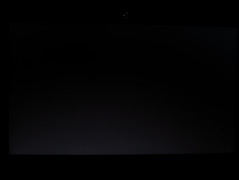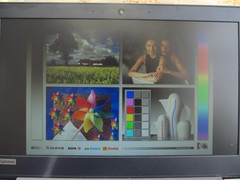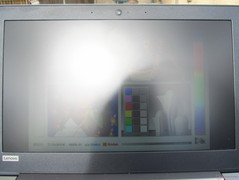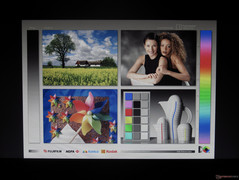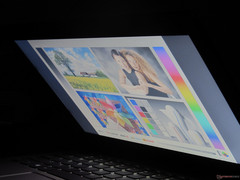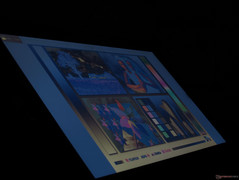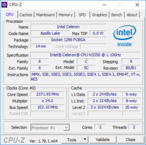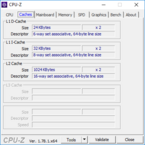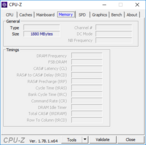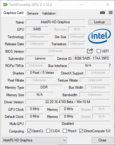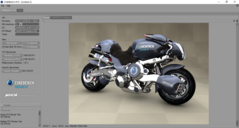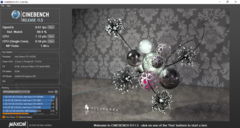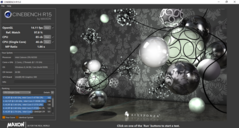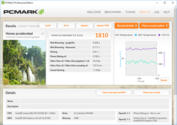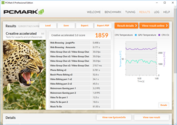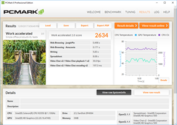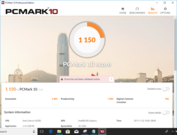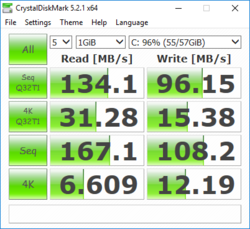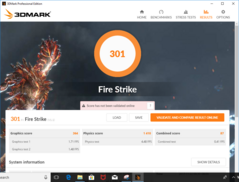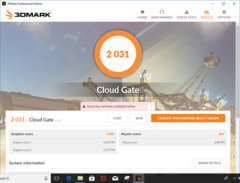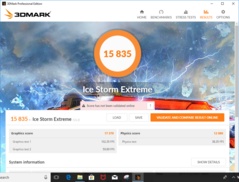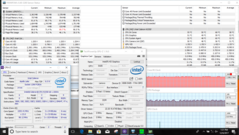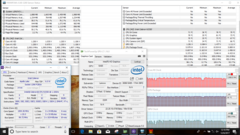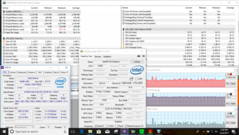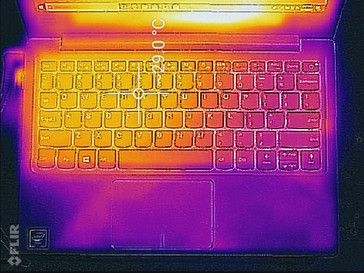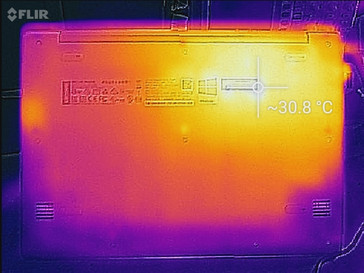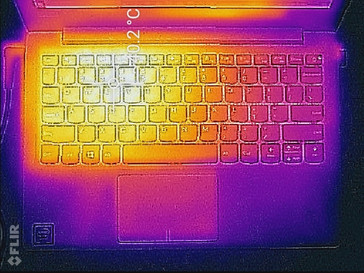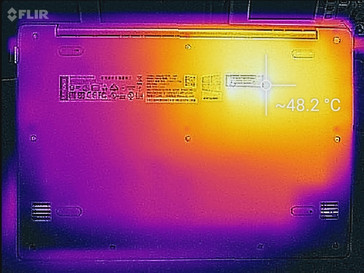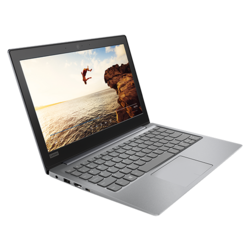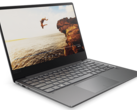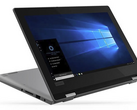Lenovo Ideapad 120s (11-inch) Notebook Review
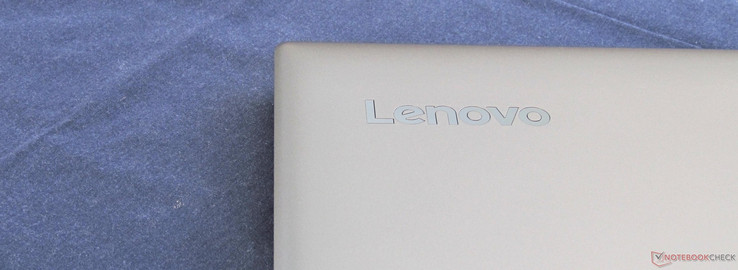
The Lenovo Ideapad 110s was a popular budget laptop last year, and it's not hard to see why. Considering the low price, it checked quite a few boxes. Today, we have its successor under review. The Ideapad 120s-11IAP aims to build upon the high points of its older brother while correcting some of its missteps. We'll see how well it accomplishes this task.
We recently reviewed the larger 14-inch variant of the 120s. Excluding the size difference, the two machines are essentially the same; port selection, design, and build quality are identical. However, the lilliputian 120s has only half the RAM of the 14-inch model (2 GB vs 4 GB), which limits system operation. We'll see how much this trade-off costs the 11.6-inch notebook and whether or not it's worth the USD $180 asking price (which is about $70 cheaper than the 14-inch SKU). Those that want a bit more pop from their device can opt for the "Denim Blue" model, which runs about $210. Aside from color, the devices are the exact same.
We'll compare the Ideapad 120s with other small budget laptops, including the previous Ideapad 110s, the Chuwi Lapbook 12.3, Acer's TravelMate B117 and One 10, and the Asus VivoBook E200HA. Without further ado, let's begin.
Case
The case is similar in fit and finish to the larger Ideapad 120s 14, which is a good thing. The design of our Mineral Gray variant is simple and straightforward without any of the garishness of other budget notebooks, although there is a more colorful Denim Blue option available for an additional $30. However, the chassis is made from the same cheap plastic as the other Celeron-based Ideapads. While it looks good and resists fingerprints and smudges, it feels cheap in the hand. Compared to the Chuwi Lapbook's sleek aluminum frame, the 120s sits in a lower tier. However, given the price, this is to be expected.
On the plus side, the same rigidity we praised in the larger device makes the transition to the smaller. The keyboard deck remains firm, even under direct pressure. The screen hinge has improved; while still too stiff for one-handed opening, the display doesn't bob during typing. The lid is still fairly thin and easy to bend and twist, which is unfortunate.
The most obvious difference between the Ideapad 120s models we've reviewed is the size. Our review unit today is the smaller of the two, measuring a bit smaller and thinner than other 11-inch budget laptops. The total coverage area measures about 575 cm2, making the Ideapad small enough to fit in a large handbag. The device is also light at about 1.3 kg (~2.87 lbs) and won't be noticed when carried in a bag or backpack.
Connectivity
Connectivity mirrors the larger Ideapad 120s exactly. There are two USB 3.0 Type-A ports, a USB 3.1 (Gen 1) Type C, a full-sized HDMI, a microSD card slot, and a combo audio jack. Despite the smaller stature, the ports are well spaced with an ample amount of room for peripherals. The USB Type-C port does not support charging or Thunderbolt 3.
SD Card Reader
The SD Card reader is about average for the industry, hitting 85 MB/s in AS SSD, but is significantly faster than other budget laptops. The Chuwi Lapboook, for example, manage speeds less than half the Ideapad's.
| SD Card Reader | |
| average JPG Copy Test (av. of 3 runs) | |
| Lenovo Ideapad 120S-14IAP | |
| Lenovo Ideapad 120s-11IAP | |
| Lenovo Ideapad 110S-11IBR | |
| Acer TravelMate B117-M-P16Q | |
| Chuwi Lapbook 12.3 | |
| maximum AS SSD Seq Read Test (1GB) | |
| Lenovo Ideapad 120s-11IAP | |
| Lenovo Ideapad 120S-14IAP | |
| Chuwi Lapbook 12.3 | |
| Lenovo Ideapad 110S-11IBR | |
Communication
WiFi speeds are at the lower end of average and should be fast enough for most home and office routers. Hitting 348 and 330 MBit/s in our receive and transmit tests, respectively, the Ideapad 120s sits above other budget brands. During our testing period, we didn't experience any dropped signals.
Maintenance & Warranty
Maintenance options are practically non-existent. There are 10 Torx T4 screws and several stubborn plastic clips holding the bottom panel on. During our attempts at disassembly, these clips seemed determined to hold on. Prying the bottom panel off risked damage to the case; as such, we did not proceed any further. There is likely no need; the larger 14-inch Ideapad had all components except the battery and wireless card soldered to the mainboard. The smaller 11-inch unit is likely no different.
Lenovo offers a standard 12-month limited warranty with the Ideapad 120s. Please see our Guarantees, Return Policies and Warranties FAQ for country-specific information.
Input Devices
Keyboard
The keyboard shares the same excellent crisp feel the larger version had. Key travel is good and feedback is firm and responsive. However, the keys are a fair bit smaller than the 14-inch model's (1.5 cm x 1.4 cm) and will take some adjustment. The keyboard also produces similar clatter that sounds like a toy machine gun under the fingers of a fast typist. Noise aside, the keyboard is excellent and a fair bit above others in this category.
Touchpad
The touchpad has the same great response and smooth glide as its bigger brother. The clicking mechanism feels firmer and less hollow than the 14-inch model's likely due its smaller size and travel distance. The entire touchpad surface registers input. Palm rejection is good. Again, the main drawback is its size. At 9 cm x 6 cm, the touchpad may feel too restrictive for some.
Display
Lenovo opted for an AU Optronics panel for the 11.6-inch display, moving away from the Chi Mei panel used in the 14-inch 120s. While there are some improvements, there are also some trade-offs. The resolution remains the same at 1366x768, but smaller screen size yields a higher pixel density (135 PPI vs. 112 PPI). This results in cleaner edges and crisper text. Response times are a bit slower than the Chi Mei panel but are still adequate compared to other devices. Perhaps the biggest improvement in the AU Optronics screen is the absence of detectable PWM.
| |||||||||||||||||||||||||
Brightness Distribution: 90 %
Center on Battery: 266.2 cd/m²
Contrast: 397:1 (Black: 0.67 cd/m²)
ΔE ColorChecker Calman: 12.4 | ∀{0.5-29.43 Ø4.77}
ΔE Greyscale Calman: 14.4 | ∀{0.09-98 Ø5}
59% sRGB (Argyll 1.6.3 3D)
37% AdobeRGB 1998 (Argyll 1.6.3 3D)
40.33% AdobeRGB 1998 (Argyll 3D)
58.7% sRGB (Argyll 3D)
39.03% Display P3 (Argyll 3D)
Gamma: 2.16
CCT: 19436 K
| Lenovo Ideapad 120s-11IAP AU Optronics AUO-B116XTN02.5 , TN LED, 11.6", 1366x768 | Lenovo Ideapad 120S-14IAP Chi Mei N140BGA-EA3, TN LED, 14", 1366x768 | Lenovo Ideapad 110S-11IBR Chi Mei CMN1132, TN LED, 11.6", 1366x768 | Acer Spin 1 SP111-31-C79E AU Optronics B116HAN05.0, IPS, 11.6", 1920x1080 | Chuwi Lapbook 12.3 SDC8353, IPS, 12.3", 2736x1824 | Asus VivoBook E200HA-FD0041TS Chi Mei CMN1130, N116BGE-EB2, TN LED, 11.6", 1366x768 | Acer One 10 S1002-17HU Chi Mei CMN0001, IPS, 10.1", 1280x800 | Acer TravelMate B117-M-P16Q Chi Mei N116BGE-EA2, TN LED, 11.6", 1366x768 | |
|---|---|---|---|---|---|---|---|---|
| Display | 6% | 10% | 26% | 71% | 12% | 10% | 8% | |
| Display P3 Coverage (%) | 39.03 | 41.32 6% | 42.77 10% | 49.67 27% | 68 74% | 43.73 12% | 43.01 10% | 42.04 8% |
| sRGB Coverage (%) | 58.7 | 62 6% | 64.2 9% | 72.6 24% | 98.4 68% | 65.1 11% | 63.9 9% | 62.9 7% |
| AdobeRGB 1998 Coverage (%) | 40.33 | 42.7 6% | 44.2 10% | 51.4 27% | 69.5 72% | 45.23 12% | 44.53 10% | 43.46 8% |
| Response Times | 39% | 3% | 23% | -1% | 30% | 20% | 6% | |
| Response Time Grey 50% / Grey 80% * (ms) | 72.8 ? | 35.2 ? 52% | 46 ? 37% | 36 ? 51% | 48.4 ? 34% | 45 ? 38% | 27 ? 63% | 38 ? 48% |
| Response Time Black / White * (ms) | 22.8 ? | 17.2 ? 25% | 30 ? -32% | 24 ? -5% | 30.8 ? -35% | 18 ? 21% | 28 ? -23% | 31 ? -36% |
| PWM Frequency (Hz) | 495 ? | 25770 ? | 24750 ? | 50 ? | ||||
| Screen | 4% | 14% | 50% | 76% | 31% | 42% | 13% | |
| Brightness middle (cd/m²) | 266.2 | 257.4 -3% | 243 -9% | 251 -6% | 224 -16% | 267 0% | 341 28% | 218 -18% |
| Brightness (cd/m²) | 251 | 239 -5% | 230 -8% | 247 -2% | 219 -13% | 265 6% | 339 35% | 215 -14% |
| Brightness Distribution (%) | 90 | 87 -3% | 91 1% | 86 -4% | 81 -10% | 85 -6% | 90 0% | 85 -6% |
| Black Level * (cd/m²) | 0.67 | 0.54 19% | 0.4 40% | 0.21 69% | 0.13 81% | 0.35 48% | 0.28 58% | 0.38 43% |
| Contrast (:1) | 397 | 477 20% | 608 53% | 1195 201% | 1723 334% | 763 92% | 1218 207% | 574 45% |
| Colorchecker dE 2000 * | 12.4 | 11.8 5% | 11.24 9% | 4.27 66% | 2.4 81% | 6.67 46% | 9.53 23% | 10.29 17% |
| Colorchecker dE 2000 max. * | 24.5 | 28 -14% | 19.82 19% | 11 55% | 3.7 85% | 10.32 58% | 15.9 35% | 17.68 28% |
| Greyscale dE 2000 * | 14.4 | 13.3 8% | 12.78 11% | 3.77 74% | 2.5 83% | 7.84 46% | 10.74 25% | 11.71 19% |
| Gamma | 2.16 102% | 2.2 100% | 2.33 94% | 2.26 97% | 2.31 95% | 2.3 96% | 2.71 81% | 2.45 90% |
| CCT | 19436 33% | 16811 39% | 15436 42% | 6524 100% | 6869 95% | 8076 80% | 10206 64% | 14164 46% |
| Color Space (Percent of AdobeRGB 1998) (%) | 37 | 39 5% | 41 11% | 47 27% | 63.4 71% | 42 14% | 41 11% | 40 8% |
| Color Space (Percent of sRGB) (%) | 59 | 62 5% | 64 8% | 72 22% | 98.3 67% | 65 10% | 60 2% | 63 7% |
| Total Average (Program / Settings) | 16% /
9% | 9% /
11% | 33% /
42% | 49% /
65% | 24% /
27% | 24% /
33% | 9% /
11% |
* ... smaller is better
The screen is brighter than the larger variant (251 nits vs. 239) and the backlight is more even across the entire display. While the 14-inch 120s had some noticeable bright spots, there is no such problem with the smaller model. Unfortunately, contrast is a fair bit lower than the already pitiful levels of the larger 120s, falling just short of 400:1. Images look washed out at lower brightness settings.
Color reproduction also hits the same roadblocks as the larger Chi Mei display. The DeltaE scores for colors and grays hit 12.4 and 14.4, respectively, and color coverage is underwhelming (59% sRGB, 37% AdobeRGB). Calibration helps quite a bit, dropping the DeltaEs to 4.5 for colors and 2.2 for grays. While not accurate enough for any kind of professional work, these numbers are a vast improvement. Unfortunately, calibration drops the contrast ratio to an abysmal 276:1; users will have to weigh this trade-off.
Display Response Times
| ↔ Response Time Black to White | ||
|---|---|---|
| 22.8 ms ... rise ↗ and fall ↘ combined | ↗ 16.4 ms rise | |
| ↘ 6.4 ms fall | ||
| The screen shows good response rates in our tests, but may be too slow for competitive gamers. In comparison, all tested devices range from 0.1 (minimum) to 240 (maximum) ms. » 50 % of all devices are better. This means that the measured response time is worse than the average of all tested devices (20.2 ms). | ||
| ↔ Response Time 50% Grey to 80% Grey | ||
| 72.8 ms ... rise ↗ and fall ↘ combined | ↗ 30.4 ms rise | |
| ↘ 42.4 ms fall | ||
| The screen shows slow response rates in our tests and will be unsatisfactory for gamers. In comparison, all tested devices range from 0.165 (minimum) to 636 (maximum) ms. » 99 % of all devices are better. This means that the measured response time is worse than the average of all tested devices (31.6 ms). | ||
Screen Flickering / PWM (Pulse-Width Modulation)
| Screen flickering / PWM not detected | |||
In comparison: 53 % of all tested devices do not use PWM to dim the display. If PWM was detected, an average of 8083 (minimum: 5 - maximum: 343500) Hz was measured. | |||
The matte finish on the display helps cut glare, and the screen gets just bright enough for use outdoors as long as shade is present. In direct sunlight, the screen is illegible.
Viewing angles are mediocre, mostly due to the cheap TN panel. Colors remain fairly stable along the horizontal axis but quickly invert along the vertical, shifting at about 30º and beyond.
Performance
Due to its low-power dual-core processor and limited RAM, the Ideapad 120s 11 is an underwhelming performer. The Celeron CPU can handle basic office and home tasks but struggles with anything else. Furthermore, the paltry 2 GB of RAM rules out multitasking; running more than a few applications at a time can freeze the machine.
Processor
We saw the 6 Watt Intel Celeron N3350 in our review of the 14-inch Ideapad 120s and noted its limited processing capabilities. These limits carry over to the 11-inch model as well. While single-core performance is about on par with other budget laptops, multi-core tasks are its Achilles' heel. Case in point: despite scoring 70% higher than the Asus VivoBook's Atom x5 CPU in Cinebench R15's single-core test, the N3350 falls 11% behind the Atom in the multi-threaded test. This is more a testament to the benefit of more cores, which can make a bigger difference than clock speed in some scenarios.
Long-term stability is questionable. After several runs through our Cinebench R15 loop test, the Ideapad 120s 11 is consistent in its inconsistency. Scores are all over the place with frequent dips in performance. Users should expect some kind of performance throttling during extended workloads.
For more information about the Intel Celeron N3350, please visit our dedicated CPU page here.
| wPrime 2.10 - 1024m | |
| Lenovo Ideapad 120s-11IAP | |
| Lenovo Ideapad 120S-14IAP | |
| Asus PU551LA-XO359G | |
* ... smaller is better
System Performance
Overall system performance is slow but in line with most other budget laptops. Using PCMark 8 to test the system as a whole, the 120s 11-IAP sits near the top of the pack in most tests. This Ideapad should be able to handle most rudimentary tasks, but running too many programs at once can cause the machine to lock up due to the limited memory. It should also be noted that the device routinely crashed during each PCMark 8 test; in particular, the Storage benchmark refused to complete, despite several attempts.
The device is able to handle simple tasks, like web browsing, but finds trouble with more demanding workloads. 4K video streaming, for instance, is possible, but playback takes some time to buffer and demands almost all system resources. Streaming a 4K YouTube video (link here) in a single Microsoft Edge tab (with no other applications running) hogs 1.5 GB of RAM (83% of the total available memory) and uses between 80-100% of the CPU. Even opening the Start Menu during the test results in a complete system lock for about 5 to 10 seconds. However, once buffered, 24 or 30 fps 4K videos are smooth without any dropped frames. 60 fps 4K videos suffer from consistent stutter and aren't pleasant to watch.
| PCMark 8 Home Score Accelerated v2 | 1810 points | |
| PCMark 8 Creative Score Accelerated v2 | 1859 points | |
| PCMark 8 Work Score Accelerated v2 | 2634 points | |
| PCMark 10 Score | 1150 points | |
Help | ||
Storage Devices
Speaking of storage, the 64 GB of eMMC flash storage is about average for this price point. Read and write speeds are comparable to a mechanical drive (108 MB/s write, 167 MB/s read), but the main drawback lies in storage space. 64 GB isn't a lot to begin with; considering that about 7 GB are reserved for the operating system, there's not a lot of room left to the end user. On top of that, Lenovo pre-installs a copious amount of bloatware. Application deletion will be one of the first tasks users perform.
| Lenovo Ideapad 120s-11IAP 64 GB eMMC Flash | Lenovo Ideapad 120S-14IAP 64 GB eMMC Flash | Lenovo Ideapad 110S-11IBR SanDisk DF4032 | Chuwi Lapbook 12.3 64 GB eMMC Flash | HP 15-bw075ax WDC Scorpio Blue WD10JPVX-60JC3T1 | Dell Latitude 13 7380 Samsung PM961 MZVLW256HEHP | Lenovo IdeaPad 320S-13IKB Samsung PM961 NVMe MZVLW512HMJP | |
|---|---|---|---|---|---|---|---|
| CrystalDiskMark 5.2 / 6 | 6% | 13% | -46% | -71% | 1424% | 1451% | |
| Write 4K (MB/s) | 12.19 | 12.44 2% | 13.87 14% | 3.23 -74% | 0.76 -94% | 139.8 1047% | 170.9 1302% |
| Read 4K (MB/s) | 6.61 | 9.59 45% | 12.23 85% | 5.37 -19% | 0.29 -96% | 44.89 579% | 46.43 602% |
| Write Seq (MB/s) | 108.2 | 104.9 -3% | 101.7 -6% | 49.49 -54% | 64.8 -40% | 1224 1031% | 996 821% |
| Read Seq (MB/s) | 167.1 | 169.9 2% | 165.1 -1% | 153.3 -8% | 65.9 -61% | 1571 840% | 942 464% |
| Write 4K Q32T1 (MB/s) | 15.38 | 15.3 -1% | 13.63 -11% | 3.6 -77% | 0.84 -95% | 627 3977% | 469.1 2950% |
| Read 4K Q32T1 (MB/s) | 31.28 | 32.1 3% | 36.23 16% | 17.4 -44% | 0.7 -98% | 504 1511% | 540 1626% |
| Write Seq Q32T1 (MB/s) | 96.2 | 98.1 2% | 94.8 -1% | 24 -75% | 65.6 -32% | 1231 1180% | 1582 1544% |
| Read Seq Q32T1 (MB/s) | 134.1 | 134.9 1% | 147.5 10% | 113.2 -16% | 65.7 -51% | 1779 1227% | 3218 2300% |
GPU Performance & Gaming
The integrated Intel HD Graphics 500 graphics chip sits at the bottom of Intel's iGPU barrel. The graphics chip is suitable for simple graphical work, but more demanding tasks (e.g., photo editing, 3D model rendering) are completely out of the question. The HD Graphics 500 can support up to two external displays, although these will need to be pared down to FHD or lower resolutions. It's unlikely the graphics chip can drive more than a single 4K monitor at 30 Hz.
Due to the limited GPU, gaming is not very enjoyable on the Ideapad 120s. Older titles, like Bioshock Infinite, are choppy and unplayable even at the lowest graphical settings, and newer titles are far beyond the realm of possibility. Casual games or titles with simpler graphical demands are playable.
For more information about the Intel HD Graphics 500 GPU, please visit our dedicated page here.
| 3DMark 06 Standard Score | 3506 points | |
| 3DMark 11 Performance | 530 points | |
| 3DMark Cloud Gate Standard Score | 2031 points | |
| 3DMark Fire Strike Score | 301 points | |
Help | ||
| low | med. | high | ultra | |
|---|---|---|---|---|
| BioShock Infinite (2013) | 18 |
Stress Test
The Lenovo Ideapad 120s isn't designed for long periods of stressful loads, but running Prime95 and FurMark to tax the CPU and GPU, respectively, gives a good picture of a worst-case scenario. Under full load for an hour, the CPU boost to its rated maximum 2.4 GHz and is able to hold at about 2.3 GHz. Temperatures across the CPU die are remarkably well-managed, averaging about 58° C. FurMark pushes the GPU to its limit, which sadly isn't very far. The Intel HD Graphics 500 jumps to 650 MHz before settling back to about 340 MHz. Temperatures stay in the low 70's centigrade during the hour-long test. Running Prime95 and FurMark concurrently, the system is held back quite a bit. The CPU is able to boost to 2.4 GHz but slows to 1.8 GHz with intermittent dips to 1.6 GHz. The GPU bursts infrequently to 650 MHz but tends to sit at 350 MHz. Temperatures again are quite good, hovering in the mid 70's. Unsurprisingly, the 11-inch model performs similarly to its big brother.
It should be noted that Unigine Valley would crash soon after startup. As such, we were unable to attain reliable data for this portion of the stress test.
| CPU Clock (GHz) | GPU Clock (MHz) | Average CPU Temperature (°C) | Average GPU Temperature (°C) | |
| Prime95 Stress | 2.3 | - | 58 | - |
| FurMark Stress | 1.8 | 342 | 70 | 73 |
| Prime95 + FurMark Stress | 1.75 | 321 | 73 | 76 |
Emissions
System Noise
The Ideapad 120s cools its components passively and does not contain a fan. The system is virtually silent. We did notice some coil whine in the upper left of the bottom panel, but it isn't audible above normal room noise.
Temperature
Despite the fanless design, exterior temperatures are very good. The surface temperature never breaks 48° C, and the chassis only gets that hot on the bottom panel directly over the CPU. The keyboard deck remains cool to the touch under load. The bottom panel gets somewhat warm, averaging between 40-42° C. The device may feel toasty in the lap under load but doesn't grow uncomfortable.
(±) The maximum temperature on the upper side is 40.6 °C / 105 F, compared to the average of 35.9 °C / 97 F, ranging from 21.4 to 59 °C for the class Subnotebook.
(-) The bottom heats up to a maximum of 47.8 °C / 118 F, compared to the average of 39.3 °C / 103 F
(+) In idle usage, the average temperature for the upper side is 26.9 °C / 80 F, compared to the device average of 30.8 °C / 87 F.
(+) The palmrests and touchpad are cooler than skin temperature with a maximum of 28 °C / 82.4 F and are therefore cool to the touch.
(±) The average temperature of the palmrest area of similar devices was 28.2 °C / 82.8 F (+0.2 °C / 0.4 F).
Speakers
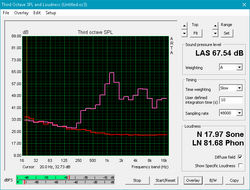
The speakers are poor. The volume is fairly low at 67 dB, and the absence of bass lends to an overall thin sound profile. The speakers are worse than some smartphone drivers and are aurally disappointing.
Lenovo Ideapad 120s-11IAP audio analysis
(-) | not very loud speakers (67.5 dB)
Bass 100 - 315 Hz
(-) | nearly no bass - on average 15.9% lower than median
(±) | linearity of bass is average (10.2% delta to prev. frequency)
Mids 400 - 2000 Hz
(±) | higher mids - on average 7.4% higher than median
(-) | mids are not linear (23.6% delta to prev. frequency)
Highs 2 - 16 kHz
(+) | balanced highs - only 3.8% away from median
(-) | highs are not linear (15% delta to prev. frequency)
Overall 100 - 16.000 Hz
(-) | overall sound is not linear (40.1% difference to median)
Compared to same class
» 99% of all tested devices in this class were better, 0% similar, 1% worse
» The best had a delta of 5%, average was 18%, worst was 53%
Compared to all devices tested
» 95% of all tested devices were better, 0% similar, 5% worse
» The best had a delta of 4%, average was 24%, worst was 134%
Lenovo Ideapad 110S-11IBR audio analysis
(-) | not very loud speakers (64.2 dB)
Bass 100 - 315 Hz
(-) | nearly no bass - on average 21.7% lower than median
(±) | linearity of bass is average (8.2% delta to prev. frequency)
Mids 400 - 2000 Hz
(±) | higher mids - on average 7.9% higher than median
(-) | mids are not linear (16.5% delta to prev. frequency)
Highs 2 - 16 kHz
(+) | balanced highs - only 3% away from median
(±) | linearity of highs is average (9.4% delta to prev. frequency)
Overall 100 - 16.000 Hz
(-) | overall sound is not linear (36.2% difference to median)
Compared to same class
» 96% of all tested devices in this class were better, 1% similar, 2% worse
» The best had a delta of 5%, average was 18%, worst was 53%
Compared to all devices tested
» 94% of all tested devices were better, 1% similar, 5% worse
» The best had a delta of 4%, average was 24%, worst was 134%
Acer TravelMate B117-M-P16Q audio analysis
(-) | not very loud speakers (71 dB)
Bass 100 - 315 Hz
(-) | nearly no bass - on average 30.8% lower than median
(±) | linearity of bass is average (9.9% delta to prev. frequency)
Mids 400 - 2000 Hz
(±) | higher mids - on average 6.7% higher than median
(±) | linearity of mids is average (8.6% delta to prev. frequency)
Highs 2 - 16 kHz
(+) | balanced highs - only 1.5% away from median
(+) | highs are linear (6.7% delta to prev. frequency)
Overall 100 - 16.000 Hz
(±) | linearity of overall sound is average (26.9% difference to median)
Compared to same class
» 43% of all tested devices in this class were better, 14% similar, 43% worse
» The best had a delta of 14%, average was 25%, worst was 35%
Compared to all devices tested
» 82% of all tested devices were better, 4% similar, 14% worse
» The best had a delta of 4%, average was 24%, worst was 134%
Frequency Comparison (Checkbox selectable!)
Graph 1: Pink Noise 100% Vol.; Graph 2: Audio off
Energy Management
Power Consumption
Because of the low TDP of the CPU and the smaller screen size, power draw is quite small. Under maximum load, the machine pulls a mere 12 Watts, which is less than almost every other compared device. Compared to the 14-inch Ideapad 120s, the 11-inch model pulls about 10% less power under load and about 25% less while idle.
The power adapter is rated at 45 Watts, which is far behind the requirements of the Ideapad 120s. Both the 11.6- and 14-inch models use the same power adapter, so a single power adapter can be used between the different SKUs without problem.
| Off / Standby | |
| Idle | |
| Load |
|
Key:
min: | |
| Lenovo Ideapad 120s-11IAP Celeron N3350, HD Graphics 500, 64 GB eMMC Flash, TN LED, 1366x768, 11.6" | Lenovo Ideapad 120S-14IAP Celeron N3350, HD Graphics 500, 64 GB eMMC Flash, TN LED, 1366x768, 14" | Lenovo Ideapad 110S-11IBR N3060, HD Graphics 400 (Braswell), SanDisk DF4032, TN LED, 1366x768, 11.6" | Acer Spin 1 SP111-31-C79E Celeron N3450, HD Graphics 500, Toshiba MQ01ABF050, IPS, 1920x1080, 11.6" | Chuwi Lapbook 12.3 Celeron N3450, HD Graphics 500, 64 GB eMMC Flash, IPS, 2736x1824, 12.3" | Asus VivoBook E200HA-FD0041TS Z8350, HD Graphics 400 (Braswell), Hynix HBG4a2 32 GB eMMC, TN LED, 1366x768, 11.6" | Acer One 10 S1002-17HU Z3735F, HD Graphics (Bay Trail), 32 GB eMMC Flash, IPS, 1280x800, 10.1" | Acer TravelMate B117-M-P16Q N3710, HD Graphics 405 (Braswell), Liteonit CV3-8D256, TN LED, 1366x768, 11.6" | |
|---|---|---|---|---|---|---|---|---|
| Power Consumption | -10% | -64% | -37% | -82% | -21% | -33% | -62% | |
| Idle Minimum * (Watt) | 2.8 | 2.7 4% | 7 -150% | 4.6 -64% | 5.9 -111% | 4.3 -54% | 3.9 -39% | 6.2 -121% |
| Idle Average * (Watt) | 4.2 | 5.3 -26% | 8.2 -95% | 6.6 -57% | 7.7 -83% | 6 -43% | 7.4 -76% | 8 -90% |
| Idle Maximum * (Watt) | 5.1 | 5.7 -12% | 8.5 -67% | 7.1 -39% | 8.6 -69% | 6.3 -24% | 7.8 -53% | 8.6 -69% |
| Load Average * (Watt) | 11.8 | 12.9 -9% | 12.5 -6% | 13.8 -17% | 18.2 -54% | 11.4 3% | 11.6 2% | 13.5 -14% |
| Load Maximum * (Watt) | 12.1 | 13.1 -8% | 12.3 -2% | 13.1 -8% | 23.6 -95% | 10.8 11% | 11.7 3% | 13.8 -14% |
* ... smaller is better
Battery Life
Battery life is about average. The 32 Wh battery lasts just over 7 hours in our WiFi v1.3 battery test and runs 15 minutes longer than the larger Ideapad's power pack. While not enough to get through a full workday, the 11.6-inch 120s should last long enough to get plenty done while away from an outlet. Road warriors on a tight budget will want to look at other options from Acer and Asus. The Spin 1, VivoBook E200HA, and TravelMate B117 each lasted about 9 hours or more in our tests.
| Lenovo Ideapad 120s-11IAP Celeron N3350, HD Graphics 500, 32 Wh | Lenovo Ideapad 120S-14IAP Celeron N3350, HD Graphics 500, 32 Wh | Lenovo Ideapad 110S-11IBR N3060, HD Graphics 400 (Braswell), 39.1 Wh | Acer Spin 1 SP111-31-C79E Celeron N3450, HD Graphics 500, 48.9 Wh | Chuwi Lapbook 12.3 Celeron N3450, HD Graphics 500, 36.48 Wh | Asus VivoBook E200HA-FD0041TS Z8350, HD Graphics 400 (Braswell), 38 Wh | Acer One 10 S1002-17HU Z3735F, HD Graphics (Bay Trail), 31 Wh | Acer TravelMate B117-M-P16Q N3710, HD Graphics 405 (Braswell), 49 Wh | |
|---|---|---|---|---|---|---|---|---|
| Battery runtime | -15% | -11% | 31% | -8% | 24% | 7% | 35% | |
| Reader / Idle (h) | 15.3 | 16 5% | ||||||
| WiFi v1.3 (h) | 7.2 | 7 -3% | 6.4 -11% | 9.4 31% | 6.6 -8% | 8.9 24% | 7.7 7% | 9.7 35% |
| Load (h) | 3.8 | 2 -47% |
Pros
Cons
Verdict
The 11.6-inch Lenovo Ideapad 120s checks many of the same boxes as its big brother and comes with many of the same compromises. The biggest difference, outside of size, is the limited 2 GB of RAM found in the smaller machine. In real-world use, this greatly hampers multitasking and content-rich tasks like web browsing. Aside from these points, though, both devices are incredibly similar.
The decision comes down to personal preference. The smaller variant is lighter, more portable, and tends to run slightly cooler. The 14-inch model has a larger screen, more memory, and benchmarks slightly better. The keyboard on the 14-inch 120s is also a fair bit better, mainly due to the larger keys, but the screen is arguably worse than its 11.6-inch counterpart.
There are two main considerations when deciding between these two devices. If you want a small notebook under USD $200, the 11.6-inch Ideapad 120s is your best bet. It has some compromises but offers the same package as the 14-inch 120s (for the most part). If you want a more comfortable typing experience, the 14-inch should be your choice. The other factor is price; the 11.6-inch model is about USD $50 cheaper, which might make it more appealing to price-conscious consumers. Either way, both options offer a good, but limited, experience at this price point.
Buyers on a budget looking to save $70 or looking for a smaller device should definitely consider the 11.6-inch Ideapad 120s. Like its bigger brother, the Ideapad 120s hard to beat at this price point.
Lenovo Ideapad 120s-11IAP
- 12/10/2017 v6 (old)
Sam Medley


